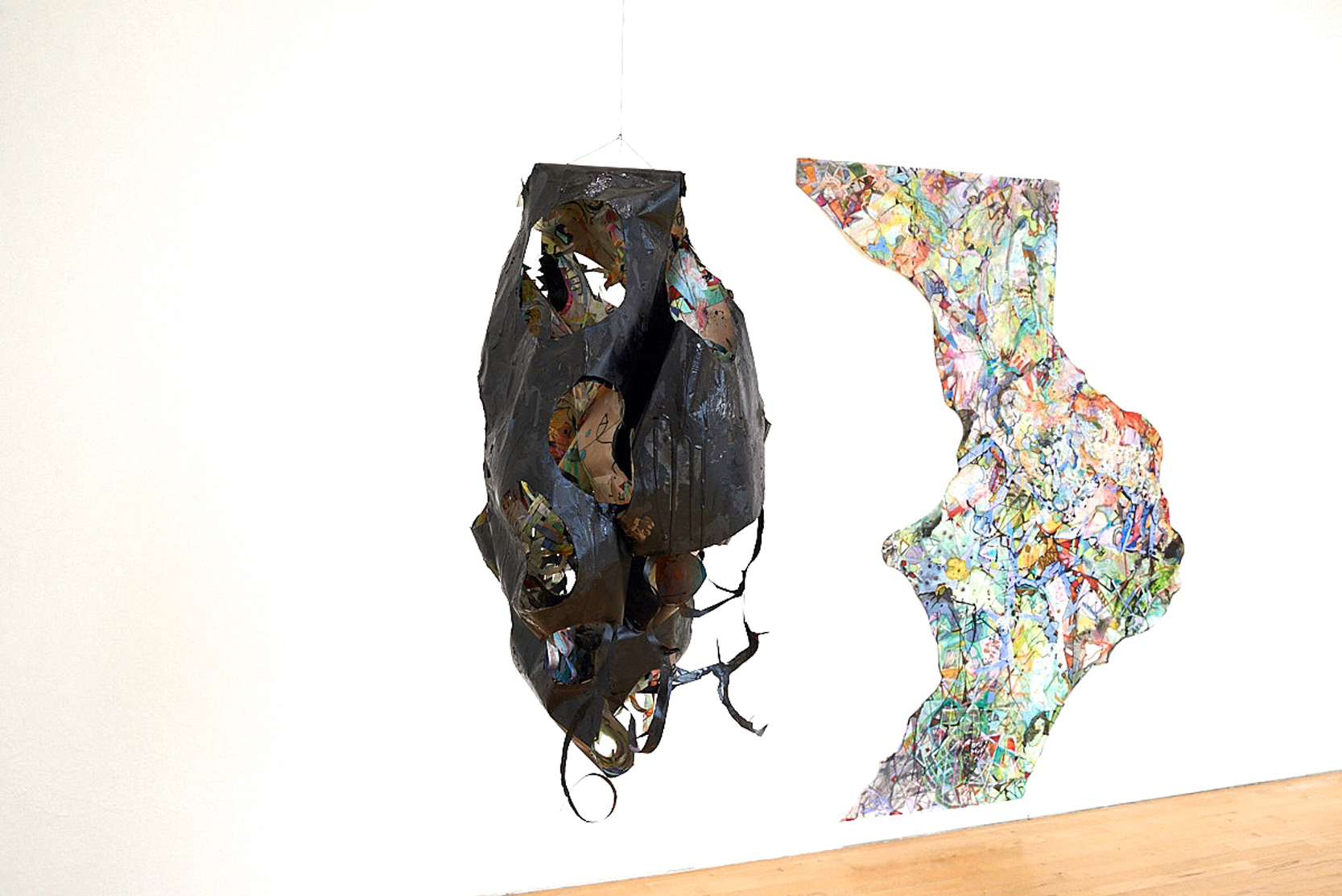Asi Art Museum, Reykjavík / Installation view / 2014
I was not at all surprised by Anna Jóelsdóttir’s decision to title this installation with an Icelandic word—brot—that has multiple meanings. I have had nearly fifteen years of experience with her work, and I have always marveled at her ability to produce so much idiosyncratic difference using the sharp focus of the ways and means of her production. Put another way (in reverse order), I’ve never had any problem identifying her work as hers, but I know better than to ever expect I’m going to see it like I’ve seen it before. None of it is ever one thing only, and it is the manner in which it keeps itself open—materially and conceptually—to being several things all at once that makes it so convincing.
Brot can mean fragment, fracture, fold, and even violation. Jóelsdóttir incorporates all of these states into the making of her work on multiple levels: from the colorful micro-networks she writes across the canvas or Mylar surfaces of her paintings, drawings, and installations, to the usually white or translucent macro-frameworks she builds to encapsulate individual works and organize entire installations. It is this micro/macro orientation that connects her work to artists like Julie Mehretu or Matthew Ritchie, but I would argue that those comparisons are limited, as they have to do more with appearance than what I want to consider here as an especially responsive version of “reality.” What sets Jóelsdóttir’s work apart is the degree to which it always seems to be changing, in motion. A large part of this effect comes from her use of Mylar and its ability to play with light, particularly in her site-relational installations where it very much becomes an intrinsic part of the materiality. This is why I was at first taken aback by svart/black when I first saw it in her studio. At first glance it was like nothing of hers I had ever seen before: drawn inward, and coated with layers of (admittedly still luscious) black ink, it dangled in the middle of her bright studio like a cocoon or carapace, somehow absorbing all of the intense light that hit its exterior. However, once drawn into it (an inevitable move, given the seductive glimpses inside provided by its hive-like construction), its ability to capture and hold light almost as a color or substance stimulated all of Jóelsdóttir’s moves and marks in its world-evoking interior. Juxtaposed with a series of irregularly shaped two- dimensional works that do fragment, fracture, fold, and violate, svart / black initiates another possible approach for any of us who interact with Jóelsdóttir’s work, to go ahead and get in it. Holding her visual thoughts wide open for us, to my mind Jóelsdóttir has more in common with artists like Polly Apfelbaum, Mary Heilmann, and Amy Sillman, even if (or precisely because) her work doesn’t resemble theirs. Like these artists, Jóelsdóttir perpetually explores in the spaces between things like abstraction and representation, and/or focus and diffusion, all the while, as she has put it, “filling in” to make space for meaning and an open, agile connection.
